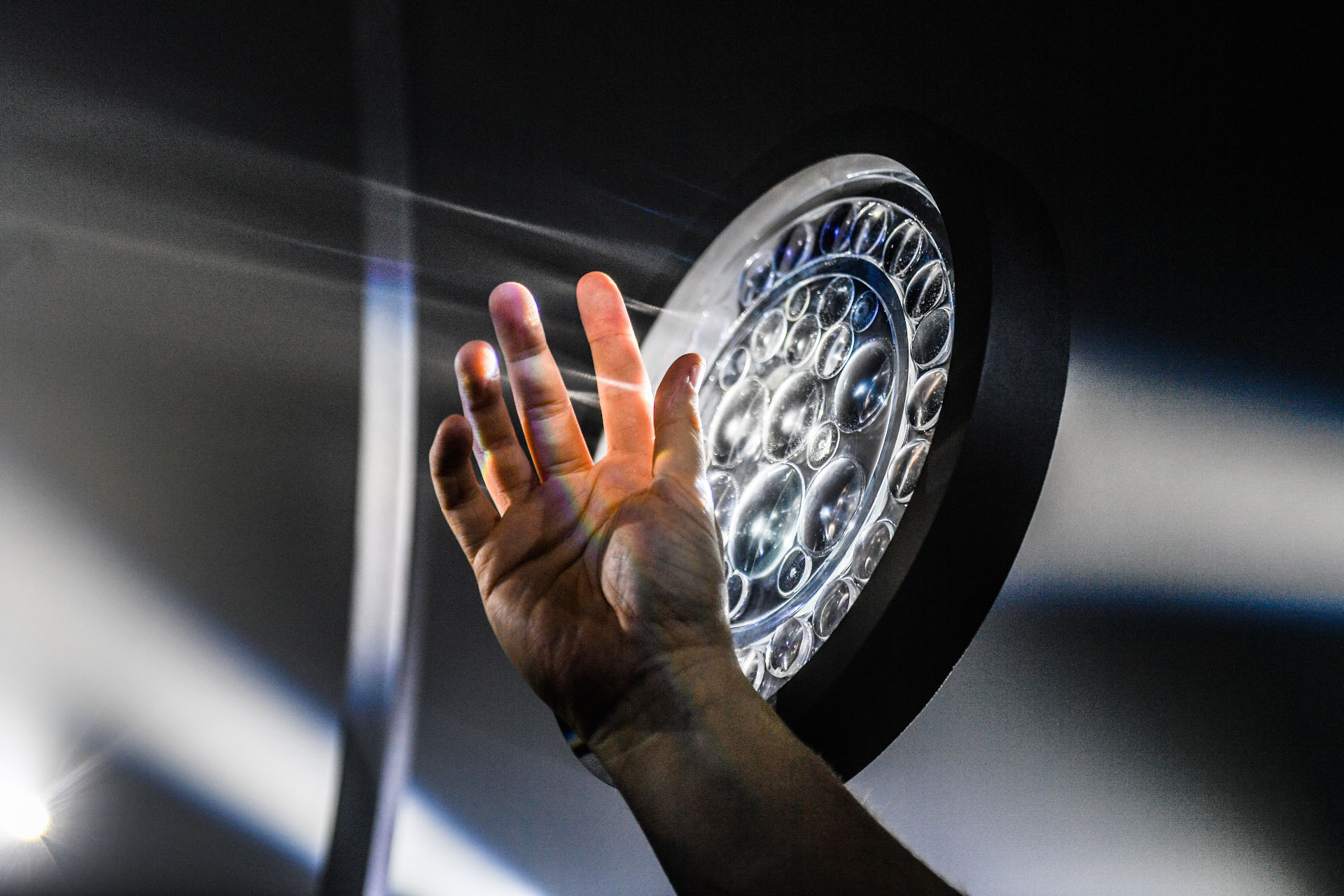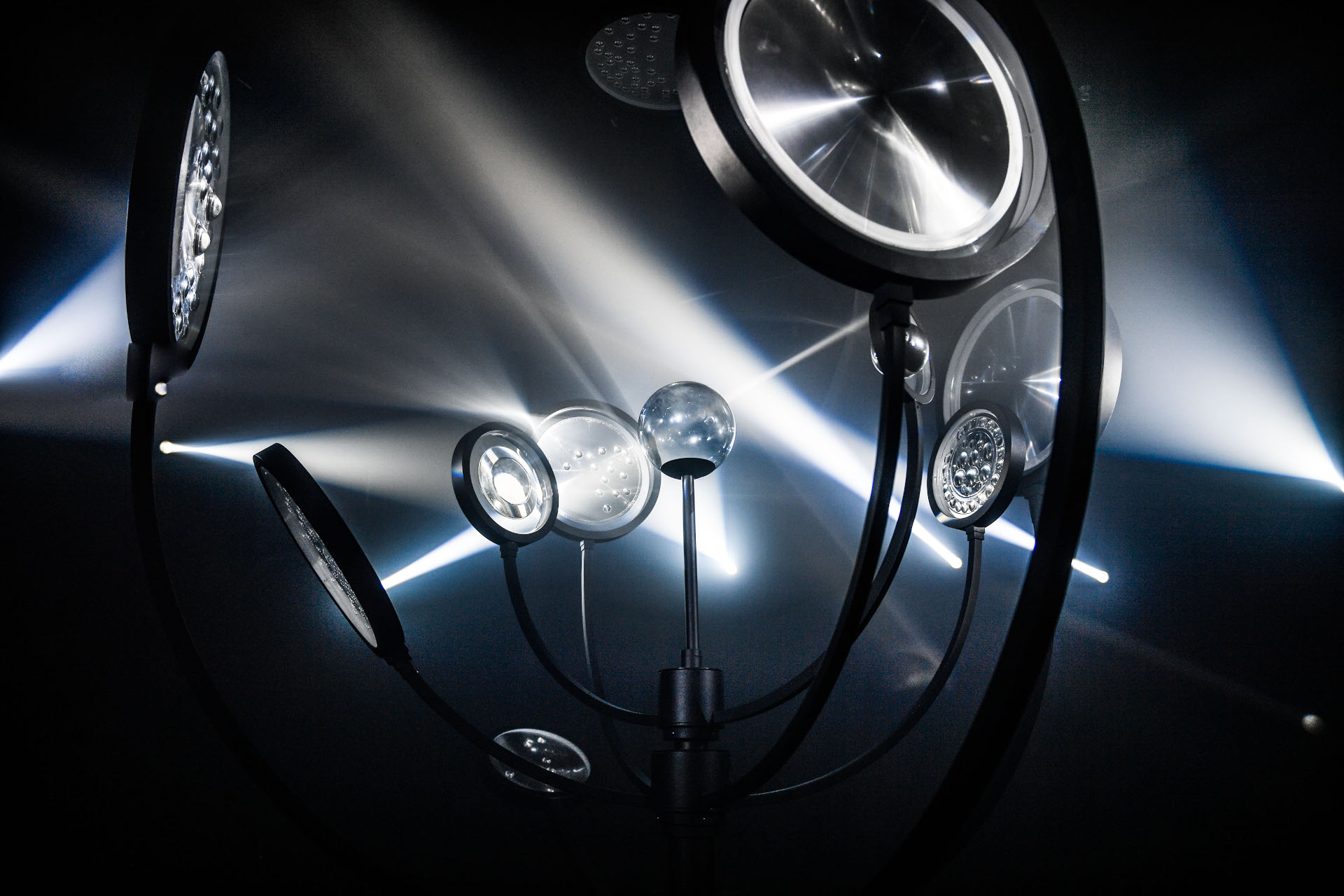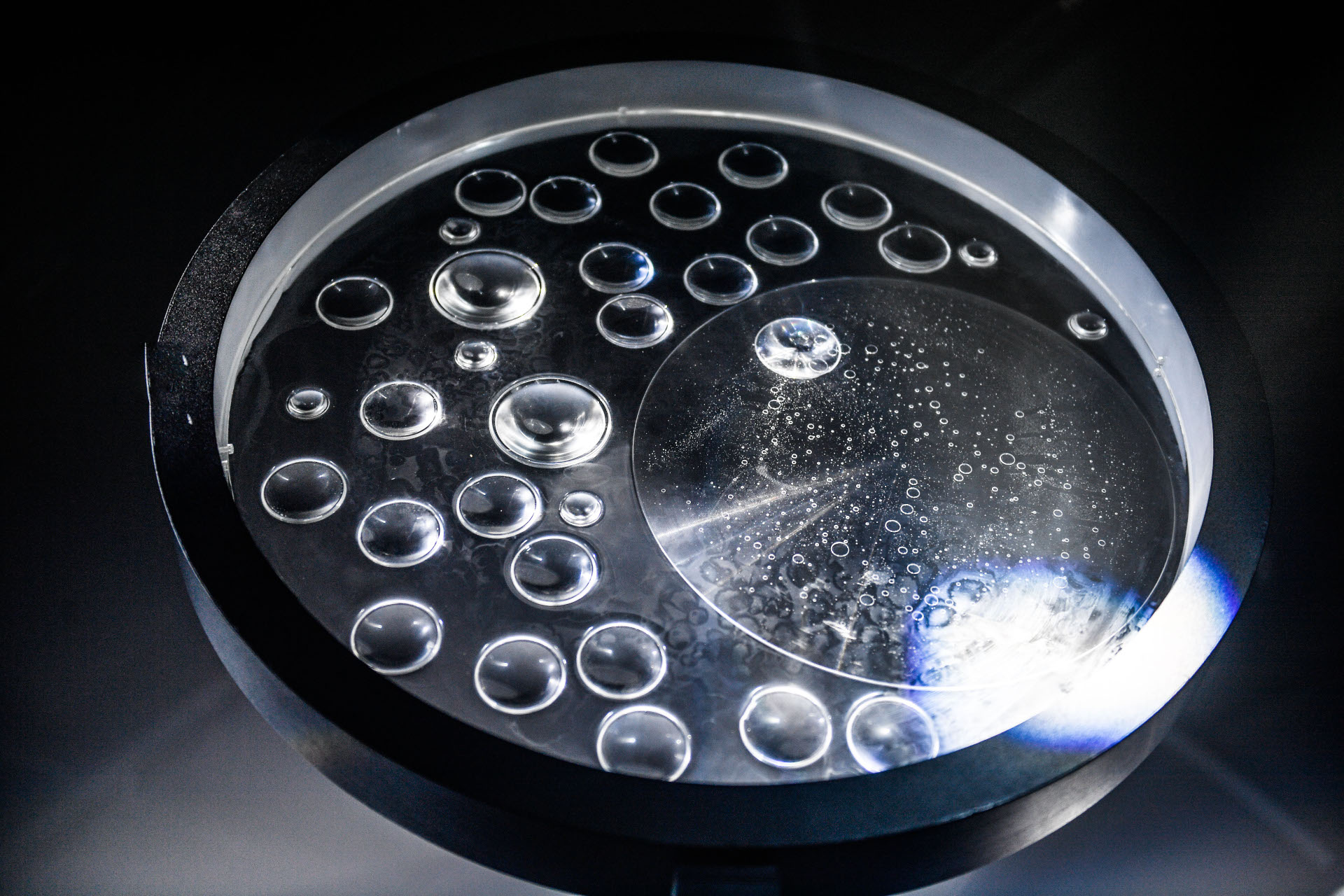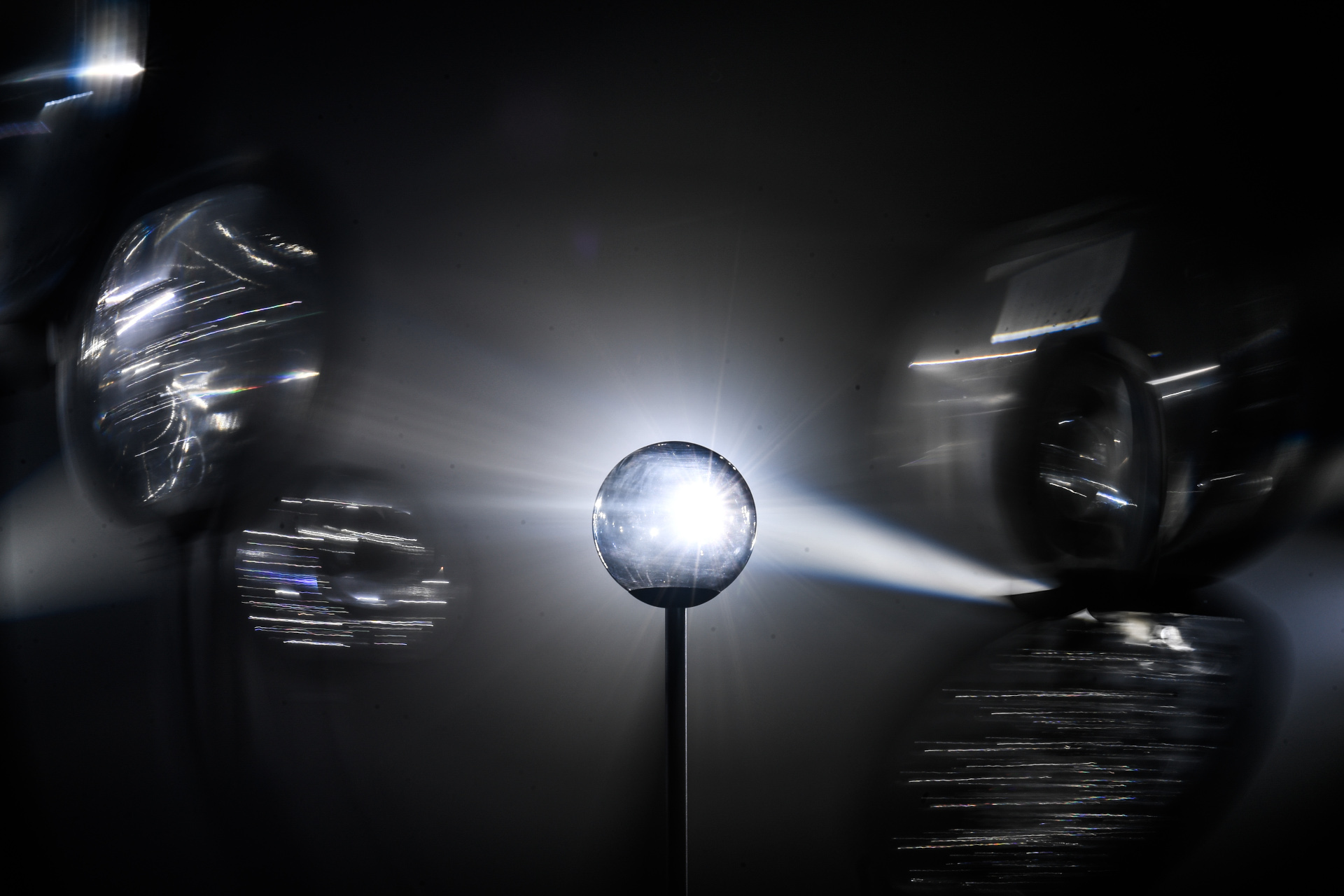
Dark matter with a hint of Leiden shines at Dublin gallery
A glittering visualisation of dark matter by Dutch artist Thijs Biersteker is on display in the Science Gallery at Trinity College Dublin. The installation – ‘Dark Distortions’ – was inspired by Euclid, a forthcoming ESA mission to study the mysterious nature of dark matter. Leiden astronomer Henk Hoekstra helped Biersteker with his artwork.
Dark matter bends light
Dark matter is thought to make up 85% of the Universe. It cannot be seen directly, but cosmologists think it exists because there is far too little visible matter in each galaxy to prevent the galaxies from flying apart. Because galaxies do not fly apart, they must contain some invisible component that keeps them coherent. This invisible stuff is called dark matter. Large concentrations of it have sufficient mass to bend light.
In response, Thijs Biersteker of Woven Studio has created a dynamic artwork in collaboration with ESA and Leiden University. The installation consists of a constellation of moving lenses that bend light just as massive concentrations of dark matter bend light. It has layers of lenses on lenses, which represent how dark matter is thought to accumulate in a fractal-like pattern.
Envisaging the invisible
Professor of Observational cosmology Henk Hoekstra, who is the cosmology coordinator of the Euclid mission, helped to inspire the work. ‘Cosmologists have a model of the Universe that is very abstract – the concept of dark matter is very different from how humans actually experience the world. This installation envisages the invisible. It takes the abstraction and connects it to our human experience.’
Thijs Biersteker adds: ‘Told in a techno-poet way, the artwork pays homage to how cutting-edge science can reveal the unseen. In the artwork, art and science come together in a magical and compelling way.’
Due to the selected cookie settings, we cannot show this video here.
Watch the video on the original website or‘Dark Distortions’ is part of a free exhibition called Invisible at the Science Gallery Dublin that combines art, physics and philosophy and runs until 25 October. The gallery has reopened after the restrictions imposed as part of the coronavirus pandemic were lifted, and has taken steps to ensure the safety of its visitors.
—————
The kinetic sculpture mimics the motion of stars in a galaxy with dark matter and bends the rays of light like dark matter does. Letting you experience the simple elegance of the discovery of something that speaks to the imagination of the Universe. It reveals how by simply looking carefully, we can discover things beyond our imagination.
This article is based on an ESA release.




